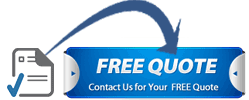Subject Code and Title: MIS302 Agile Business Analysis
Assessment: Reflection
Individual/Group: Individual
Length: 1500 words (+/- 10%)
Weighting: 30%
Learning Outcomes: The Subject Learning Outcomes demonstrated by successful completion of the task below include:
d) Communicate Agile methods, processes and approaches with stakeholders in order to address organisational requirements.
MIS302 Agile Business Analysis Assignment-Torrens University Australia.

Task Summary:
For Assessment 3, you are required to write and submit a 1500-word reflective report about your learning experience in this subject. In Assessment 2, you will have done Agile Business Analysis and created several Agile art e facts: a persona, story maps, definition of MVP, user stories, acceptance criteria and used a prioritisation framework. You will be required to discuss these Agile practices in the context of completing your case study report assessment.
Please refer to the Task Instructions for details on how to complete this task.
Context:
In Assessment 2, you designed a persona, created a list of user stories, mapped the user stories to define a minimum viable product, split two of the user stories, created acceptance criteria for these user stories and prioritised them for delivery.
MIS302 Agile Business Analysis Assignment-Torrens University Australia.

Reflective practice is recognised as a valuable part of learning through experience. Reflective practice is a process of thinking about new experiences with a view of learning from them. It is a form of personal response to new experiences, situations, events or information. As group work is often a key development area for students and university is the best place to learn, reflection is considered a key part of the learning process for this course.
This process involves recording your observations and thinking deeply about your feelings and responses to situations. It also enables you to increase your understanding and to gain new insights about yourself, others and situations. A result of these new insights may lead to a change of thinking or behaviour with the aim of improving outcomes in the future.

The model from Kolb (Figure 1) shows the different learning modes of experiential learning. First comes the experience of working in a group, with successes and challenges. However, for experiential learning to take place, reflections need to be drawn from the experience, deep thinking needs to be done to determine what worked well and what did not, and how could better outcomes have been achieved. Thereafter, these findings can be taken forward to the next group assessment experience for active experimentation to achieve good outcomes. The questions in this assessment serve as a guideline of the ethical questions associated with group work.
Task Instructions:
To complete this assessment task, you must:
1.Review your subject notes, essential readings and learning activities to ensure that you are well prepared for the assessment.
2.Plan how you will structure your ideas for your reflective report and write a report plan before you start writing.
3.Refer to the Assessment Rubric to ensure you address all the assessment criteria.
Report Structure:
- The report is brief and therefore will not require an executive summary or abstract.
- Title page: Include subject ID, subject name, assessment title, student’s name, student number and lecturer’s name.
- Table of contents: Include all key components of this assessment.
- Introduction:Also serves as your statement of purpose for the report. This means that you will tell the reader what you are going to cover in your report. You will need to inform the reader of:
• Your area of research and its context
• The key concepts you will be addressing
• What the reader can expect to find in the body of the report - Body of the report: The body of the report will need to cover the Agile Business Analysis activities you did and the art efacts that you created in Assessment 2, and will allow you to self-assess your learning progress on the task:
• What went well?
• What could have gone better?
• Which tools or techniques proved to be useful?
• If you could change one thing, what would it be?

MIS302 Agile Business Analysis Assignment-Torrens University Australia.
- Layout:
• The report should use font Arial or Calibri 11 point, should be line spaced at 1.5 for ease of reading and page numbers on the bottom of each page.
• With the required diagrams due attention should be given to pagination to avoid loss of meaning and continuity by unnecessarily splitting information over two pages. Diagrams must carry the appropriate captioning. - Conclusion: Summarise any findings or recommendations that the report puts forward regarding the concepts covered in the report. Link the conclusion back to your introduction.
- References: Formal citation of sources is not required. However, specific reference to your own experiences must be made. If you need to make a direct reference to Kolb or any of the practices, then please supply references for the specific area. All research and images used must be referenced using APA style.



